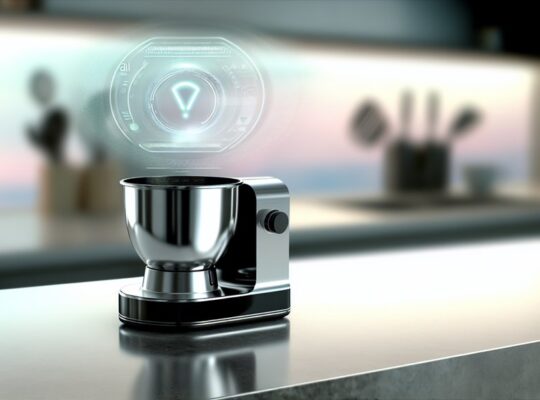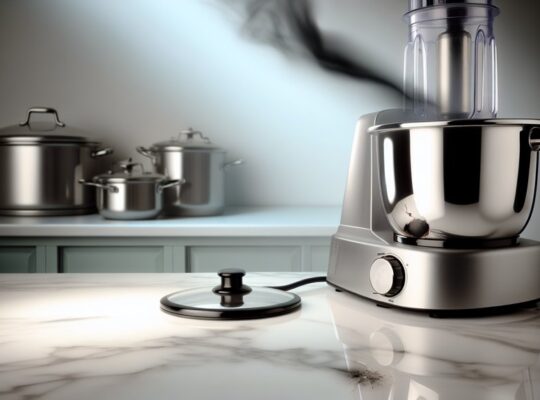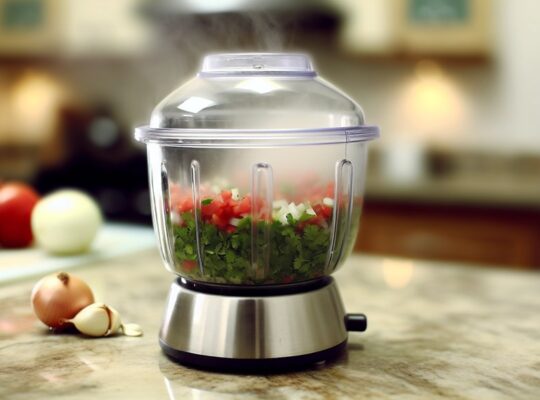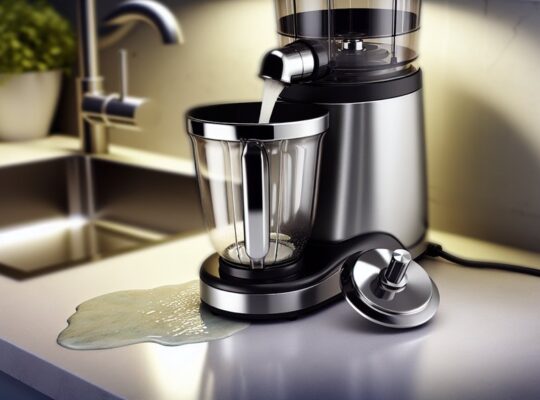If you’re weighing a smart mixer grinder, think about what those connected features actually do for you: preset cycles, adaptive speeds, and remote start can save time and deliver repeatable results, but they also raise the price and may mean firmware updates, specialized repairs, or data-sharing. You’ll want to compare warranties, service networks, and safety certifications before deciding whether the convenience justifies the added cost—here’s how to evaluate.
Key Takeaways
- Smart features (auto-shutoff, thermal sensors, overload protection) reduce damage risk and extend appliance life.
- Preset programs and adaptive speeds deliver consistent textures, saving hands-on tweaking and time.
- Remote controls and monitoring add convenience but can raise privacy and firmware-update concerns.
- Higher repair costs and proprietary parts may increase total ownership expense despite upfront convenience.
- Choose smart only if you value repeatability, frequent use, and warranty/service support over simple repairability.
What “smart” Features Do Mixer Grinders Actually Offer

What exactly makes a mixer grinder “smart”? You’ll find features that add sensors, connectivity, and automated controls to traditional motors and blades. Common additions include overload protection that cuts power before damage, thermal sensors that prevent overheating, and safety interlocks that stop blades when jars aren’t secured. You may also see preset programs for grinding textures, RPM monitoring for consistent performance, and app-based controls that let you start or monitor cycles remotely. Some models provide usage logs and maintenance alerts to reduce wear-related risks. Evaluate whether these systems are reliable, fail-safe, and easy to override manually in an emergency. Prioritize devices with clear safety certifications and straightforward user controls over marketing-driven bells and whistles. Consider models with overload protection and strong service networks for long-term reliability.
Real-World Benefits: Time, Consistency, and Convenience

How much time will a smart mixer grinder actually save you, and does that gain justify the premium? You’ll shave minutes through preset cycles, auto-shutoff, and adaptive speeds that reduce repeat tweaking. For routine tasks—purees, batter, spice grinding—consistency improves: you get uniform texture without trial-and-error, which lowers waste and cooking time. Convenience shows in hands-off operation and safe interlocks that prevent accidental starts; you can attend to other tasks with confidence. Expect smoother workflows rather than dramatic time cuts; savings compound if you cook daily or batch-prep. If safety features and reliable, repeatable results matter to you, the premium can be justified. If you only grind occasionally, the practical advantages are modest. Smart models also often include overload protection to prevent motor damage during heavy use.
Hidden Costs: Repairs, Updates, and Privacy Risks

Wondering what you’re really paying for beyond the shiny features? You’ll face ongoing costs: repairs for specialized smart components can be pricier than for simple mechanical parts, and not every technician knows the circuitry or proprietary modules. Firmware updates may be needed to patch bugs or security flaws; some are free, some aren’t, and missed updates can degrade function or safety. Connected devices introduce privacy risks — microphones, data logs, or cloud backups can collect usage patterns and personal information. Check the manufacturer’s update policy, warranty terms, and data-handling practices before buying. If safety and predictability matter to you, weigh potential service bills and privacy exposure against the convenience those smart features promise. Also consider appliance durability and warranty length — for example, models with longer motor warranties often indicate stronger build reliability and lower long-term service costs.
Who Benefits Most From a Smart Mixer Grinder?

Who benefits most from a smart mixer grinder depends on your cooking habits and tolerance for tech trade-offs. If you cook frequently and follow precise recipes, you’ll value programmable presets and repeatable results that reduce guesswork. If you have limited mobility or dexterity, hands-free schedules and voice control can make food prep safer and easier. Small households that want multi-functionality may appreciate space-saving automation, while avid entertainers who need consistent batch outputs will benefit from higher-capacity smart models. Conversely, if you prioritize simple, repairable appliances or have unreliable Wi‑Fi, a traditional grinder is safer and more predictable. In short, choose a smart unit only if its automation clearly reduces risk, effort, or variability in your routine without introducing unacceptable privacy or maintenance concerns. Smart models can also include overload protection to prevent motor damage during heavy use.
How to Decide: Practical Buying Checklist

Want a smart mixer grinder that actually fits your needs and budget? Start by listing must-haves versus nice-to-haves so you won’t overspend on features you won’t use. Prioritize safety features, warranty length, and reliable customer support; these reduce long-term risk and repair costs. Check compatibility with your recipes—power, jar types, and speed controls matter for performance and safe handling. Finally, verify build quality and certifications (e.g., electrical safety marks) before buying.
- Assess functionality: required power, jars, presets, and cleanability.
- Confirm safety: automatic shutoff, overload protection, secure lids, and certified components.
- Evaluate value: warranty terms, service network, user reviews, and total cost of ownership.
For large households, prioritize models with 700–1000W motors and multiple jars sized for family batches.
Frequently Asked Questions
Do Smart Mixer Grinders Work During Power Outages?
Generally no — they won’t work during power outages unless you connect them to a compatible UPS, inverter, or battery pack. You’ll need to confirm voltage, runtime, and safety features to avoid damage or electric hazards.
Can I Use Third-Party Jars or Attachments?
Yes — you can often use third-party jars or attachments, but check compatibility, material safety, and warranty terms first; mismatched parts can cause leaks, motor strain, or voided warranty, so prioritize certified or tested alternatives.
Are There Subscription Fees for App Features?
Some models do charge subscription fees for advanced app features, but many offer basic controls and updates free. You’ll want to check the manufacturer’s terms, data privacy policies, and cancellation options before buying.
Do Smart Grinders Increase Electricity Consumption?
No, smart grinders typically don’t noticeably increase electricity use; they draw similar power during operation, with minor extra standby consumption for connectivity. You’ll want to unplug or use a switchable outlet to minimize any idle energy and safety risk.
Is Data Collected Shared With Advertisers?
Yes — it can be, but it depends. You’ll want to check the privacy policy and settings; some manufacturers share anonymized or targeted usage data with advertisers unless you opt out or disable cloud/marketing features in the app.





